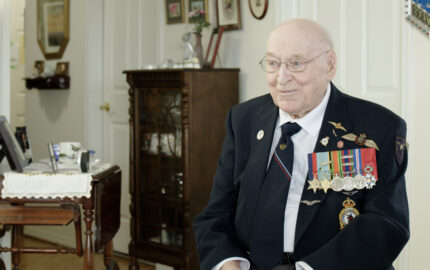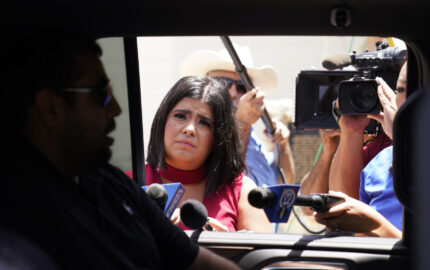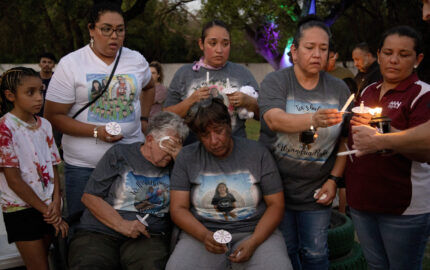RELATED WEB LINK
"Teaching journalism students how to cover violence, victims and trauma"When news of the Ethiopian Airline plane crash broke in January, I turned to my TV to learn more. Since I live in Lebanon, I turned first to the two main Arabic news networks, al-Jazeera and al-Arabia, neither of which offered details about this local event. So, I switched to the local Lebanese channels, only to be amazed by the obnoxious, highly insensitive and overtly racist coverage—with very few exceptions.
There I found reporters aggressively firing insensible questions at the grieving families who rushed to the airport clinging on to the hope of finding their loved ones among the rumored survivors. Then there were the circus-like interviews with astrologers who claimed they had “foreseen” the plane crash, along with myth-laden comments about God’s role in this disaster.
The news coverage I saw went against all the basic guidelines of trauma coverage that we teach journalism students. One reporter commented on a Lebanese passenger who had postponed his travel by saying that God must have loved him, thus insinuating that God must have hated those who did board the fateful flight ET 409. In another instance, a swarm of reporters and camera people surrounded a grieving Ethiopian woman who covered her face hiding her tears, only to find a TV crewmember literally yanking her hand away from her face to get a better shot. In another widely reported incident, another Ethiopian woman who was awaiting the body of her relative in front of the hospital to where the corpses were being brought mistakenly walked into a live TV camera shot of a veteran anchor interviewing mourning Lebanese families; the camera crew violently berated her as they pulled her out of the shot.
Such moments confirm the value of teaching trauma coverage as part of journalism education and journalist training. Journalists who cover violence and war and natural disasters reiterate the importance of learning how to tell stories involving people who are suffering from trauma. And this sentiment is exactly what we found expressed in a major study conducted by the International Center for Media and the Public Agenda (ICMPA) at the University of Maryland’s Phillip Merrill College of Journalism. This Dart Center sponsored study highlighted several steps to improving such coverage:
Knowing How to Handle Trauma
But the most interesting findings did not come out of the data but through the direct feedback from the hundreds of j-school professors and journalists whom we surveyed. Many of them noted how little they knew about the vast array of topics covered under trauma journalism. Of course, many who hear of trauma journalism think of war and terrorism, homicide and natural disasters. Yet, most don’t connect this phrase “trauma journalism” to frequently occurring news such as reporting involving drug abuse, suicide, sexual assault, rape, child abuse and domestic violence, and what is required in interviewing victims, survivors and their families, as well as first responders.
For each of these situations—and with each of the people who will be involved in telling the story—the potential exists for stressful reactions, including posttraumatic stress disorder. However, unlike coverage of wars and disasters, which receive the bulk of newsroom resources and usually involve more experienced reporters, these events occur on a daily basis—in communities large and small—and are covered more often by reporters who are not well prepared or trained for such assignments.
The result can be unwarranted damage and pain for traumatized victims and their families—and often for the journalists, too, who can feel upset and be embarrassed by how they handled their interviews and the story. Inadequate, insensitive or simply bad coverage can also tarnish the news organization and, in turn, journalism as a whole, and it can render a skewed reality of the world in which we live.
Even with coverage of war and catastrophes, there is a lot to be learned in observing how the best reporters and news organizations handle coverage of these events. Whether the Iraq war or the Palestine-Israel conflict, it is important to look at how victims on each side are covered? It is well worth discussing with students why many victims are robbed of their humanity by being represented only as numbers and statistics, if mentioned at all. And taking a look at how the same news organization produces different narratives about similar natural disasters—for example, a comparison of how New Orleans in the wake of Katrina was handled compared with Haiti’s earthquake or Southeast Asia’s tsunami– can be a valuable experience.
Journalists interviewed for the ICMPA study expressed their strong feeling that this kind of learning and training—the asking of these types of questions—needs to extend to those who manage newsrooms.
It became clear to me in doing this study that trauma journalism should be a fixture of journalism curricula and training programs. We are seeing more diverse and rich resources on this topic, as the Winter 2009 issue of the Nieman Reports displays. And given the prevalence of conflict and war, the violence and criminal acts that reporters are asked to cover, and the predictable incidence of natural disasters, there can be no debate about the necessity of putting this topic front and center in j-schools and newsrooms.
Perhaps the most salient argument is the moral one; it is journalists’ obligation to those who are victims of traumatic events to tell their stories in ways that don’t inflict more emotional damage on them while informing the public about what has happened.
Jad Melki, the research director of ICMPA and a faculty member at the Salzburg Academy, is an assistant professor of journalism and media studies at the American University of Beirut. He was a broadcast and online journalist for more than 10 years working with American and Arabic news media, and as part of the Hot Zone reporting team covering the 2006 Israeli war on Lebanon for Yahoo!@ News, he won a Webby award and Press Club award. His e-mail is jad.melki@aub.edu.lb, and his Web site is www.jadmelki.com.
"Teaching journalism students how to cover violence, victims and trauma"When news of the Ethiopian Airline plane crash broke in January, I turned to my TV to learn more. Since I live in Lebanon, I turned first to the two main Arabic news networks, al-Jazeera and al-Arabia, neither of which offered details about this local event. So, I switched to the local Lebanese channels, only to be amazed by the obnoxious, highly insensitive and overtly racist coverage—with very few exceptions.
There I found reporters aggressively firing insensible questions at the grieving families who rushed to the airport clinging on to the hope of finding their loved ones among the rumored survivors. Then there were the circus-like interviews with astrologers who claimed they had “foreseen” the plane crash, along with myth-laden comments about God’s role in this disaster.
The news coverage I saw went against all the basic guidelines of trauma coverage that we teach journalism students. One reporter commented on a Lebanese passenger who had postponed his travel by saying that God must have loved him, thus insinuating that God must have hated those who did board the fateful flight ET 409. In another instance, a swarm of reporters and camera people surrounded a grieving Ethiopian woman who covered her face hiding her tears, only to find a TV crewmember literally yanking her hand away from her face to get a better shot. In another widely reported incident, another Ethiopian woman who was awaiting the body of her relative in front of the hospital to where the corpses were being brought mistakenly walked into a live TV camera shot of a veteran anchor interviewing mourning Lebanese families; the camera crew violently berated her as they pulled her out of the shot.
Such moments confirm the value of teaching trauma coverage as part of journalism education and journalist training. Journalists who cover violence and war and natural disasters reiterate the importance of learning how to tell stories involving people who are suffering from trauma. And this sentiment is exactly what we found expressed in a major study conducted by the International Center for Media and the Public Agenda (ICMPA) at the University of Maryland’s Phillip Merrill College of Journalism. This Dart Center sponsored study highlighted several steps to improving such coverage:
- Increase the attention paid to trauma journalism education and training and provide additional classroom resources—syllabi, multimedia, videos and textbooks and experts
- Expand and increase the venues for discussion—conferences, workshops, awareness campaigns
- Institute changes in newsroom policies and cultures
Knowing How to Handle Trauma
But the most interesting findings did not come out of the data but through the direct feedback from the hundreds of j-school professors and journalists whom we surveyed. Many of them noted how little they knew about the vast array of topics covered under trauma journalism. Of course, many who hear of trauma journalism think of war and terrorism, homicide and natural disasters. Yet, most don’t connect this phrase “trauma journalism” to frequently occurring news such as reporting involving drug abuse, suicide, sexual assault, rape, child abuse and domestic violence, and what is required in interviewing victims, survivors and their families, as well as first responders.
For each of these situations—and with each of the people who will be involved in telling the story—the potential exists for stressful reactions, including posttraumatic stress disorder. However, unlike coverage of wars and disasters, which receive the bulk of newsroom resources and usually involve more experienced reporters, these events occur on a daily basis—in communities large and small—and are covered more often by reporters who are not well prepared or trained for such assignments.
The result can be unwarranted damage and pain for traumatized victims and their families—and often for the journalists, too, who can feel upset and be embarrassed by how they handled their interviews and the story. Inadequate, insensitive or simply bad coverage can also tarnish the news organization and, in turn, journalism as a whole, and it can render a skewed reality of the world in which we live.
Even with coverage of war and catastrophes, there is a lot to be learned in observing how the best reporters and news organizations handle coverage of these events. Whether the Iraq war or the Palestine-Israel conflict, it is important to look at how victims on each side are covered? It is well worth discussing with students why many victims are robbed of their humanity by being represented only as numbers and statistics, if mentioned at all. And taking a look at how the same news organization produces different narratives about similar natural disasters—for example, a comparison of how New Orleans in the wake of Katrina was handled compared with Haiti’s earthquake or Southeast Asia’s tsunami– can be a valuable experience.
Journalists interviewed for the ICMPA study expressed their strong feeling that this kind of learning and training—the asking of these types of questions—needs to extend to those who manage newsrooms.
It became clear to me in doing this study that trauma journalism should be a fixture of journalism curricula and training programs. We are seeing more diverse and rich resources on this topic, as the Winter 2009 issue of the Nieman Reports displays. And given the prevalence of conflict and war, the violence and criminal acts that reporters are asked to cover, and the predictable incidence of natural disasters, there can be no debate about the necessity of putting this topic front and center in j-schools and newsrooms.
Perhaps the most salient argument is the moral one; it is journalists’ obligation to those who are victims of traumatic events to tell their stories in ways that don’t inflict more emotional damage on them while informing the public about what has happened.
Jad Melki, the research director of ICMPA and a faculty member at the Salzburg Academy, is an assistant professor of journalism and media studies at the American University of Beirut. He was a broadcast and online journalist for more than 10 years working with American and Arabic news media, and as part of the Hot Zone reporting team covering the 2006 Israeli war on Lebanon for Yahoo!@ News, he won a Webby award and Press Club award. His e-mail is jad.melki@aub.edu.lb, and his Web site is www.jadmelki.com.


